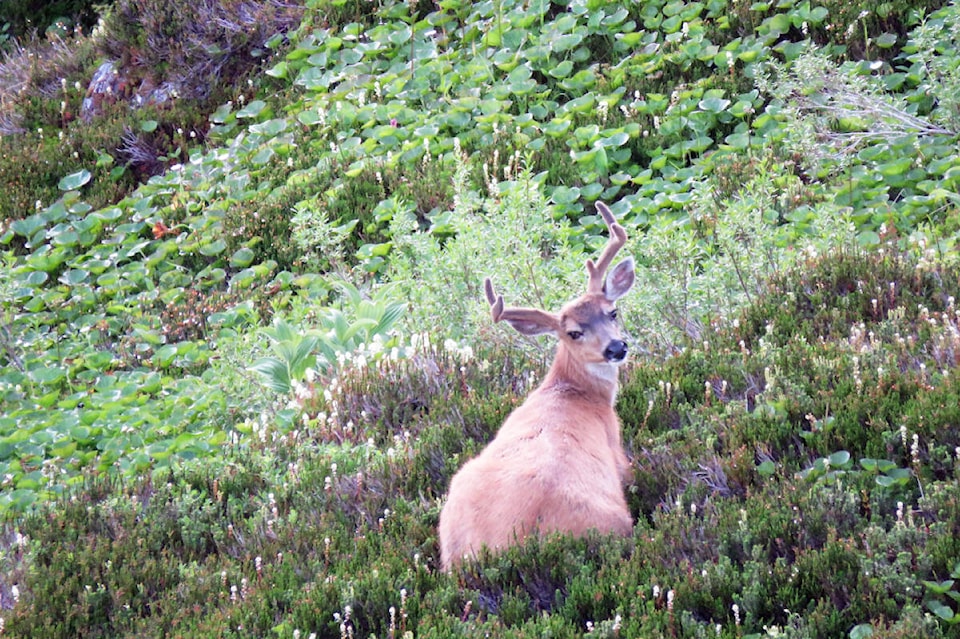Two years after wildfire scorched a swathe through the territory of the Skeetchestn First Nation, the community’s natural resource officials say a study shows surviving mule deer are still showing signs of stress.
With access restrictions set to lift this fall following the devastating Sparks Lake and Tremont Creek wildfires of 2021, Skeetchestn Natural Resources Corp. is asking the public to stay away from the burns and launching a public education campaign about the risks posed to mule deer this winter.
“Everyone has the same goal, environmental sustainability, and healthy wildlife and ecosystems,” Shaun Freeman, a senior wildlife and habitat biologist for the community, said in a statement. “To achieve this, we’re asking people to stay out of the burns, particularly the low elevation areas, this winter.”
The Sparks Lake and Tremont Creek wildfires burned 30 per cent of Skeetchestn’s territory, west of Kamloops, including 50 per cent of the key deer winter range.
A joint study by Skeetchestn Natural Resources Corp. and the University of British Columbia’s Faculty of Forestry found the loss of habitat, combined with a severe winter following the fires, led to a reduction in the deer population and increased stress levels among the deer. These factors can cause a higher risk of starvation or make deer more susceptible to predation.
The campaign comes amid the worst wildfire season in B.C. Since April 1, 1,788 wildfires have burned about 1.59 million hectares of land in the province, and there are currently 376 active fires burning.
“Our message to the public is to recognize that just because the ashes are cool and fireweed, herbs, and grass are growing, it doesn’t mean it’s safe to go out and play without impact to wildlife or the ecology,” Freeman said. “We’ve already lost 50 per cent of functional classic deer winter range, so there’s really no wiggle room, and people need to keep that in mind when using the land base.”
As a first step in protecting the territory, Skeetchestn Natural Resources Corp. employees trained B.C. conservation officers will have a presence year-round in the territory from now on, particularly throughout the fall and winter, to educate the public about the sensitivities that remain on the ground to minimize public impact, he said.
Warning the situation is only going to get worse come winter; the group is utilizing the expertise of UBC researcher Sarah Dickson-Hoyle, a postdoctoral fellow at the Faculty of Forestry whose work is supported by the national innovation organization Mitacs who will be working with Skeetchestn through the federally funded program.
READ MORE: B.C. town wants to fine stores for allowing shopping carts to be stolen
In collaboration with the SNRC, Hoyle is investigating wildlife recovery and ecosystem restoration in Skeetchestn territory to help mitigate the potential adverse effects. She said she wants to highlight the importance of not disrupting the habitat as it goes through the process of repairing itself.
“If you do visit the territory and come into a burned area, be cognizant, try to be respectful, and keep your disturbance to a minimum to give nature and ecology time to heal,” said Freeman.
READ MORE: Thompson River at lowest level on record for this time of year
